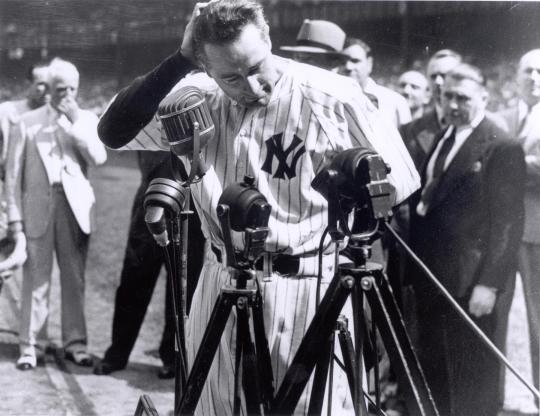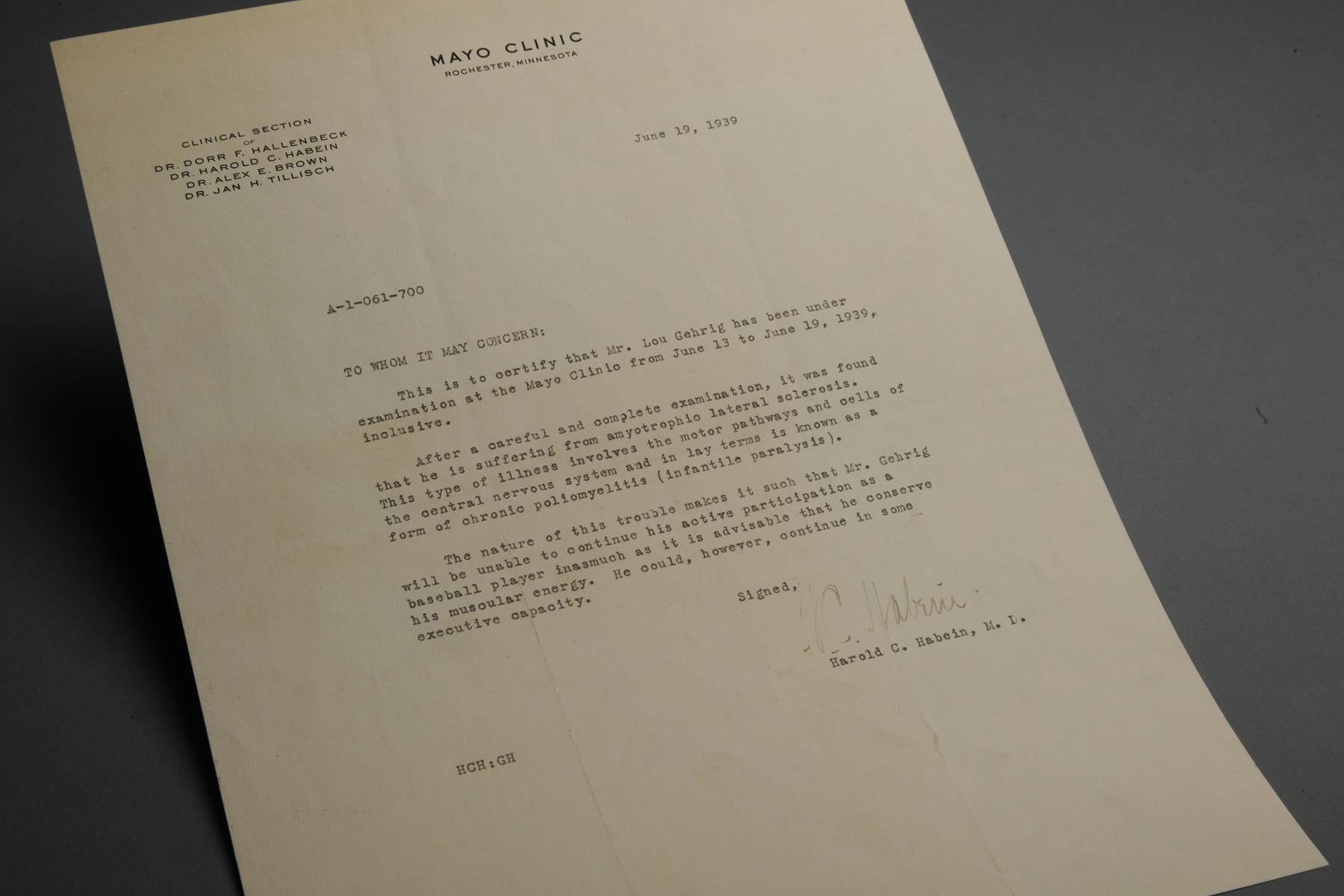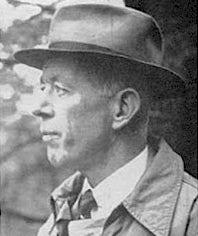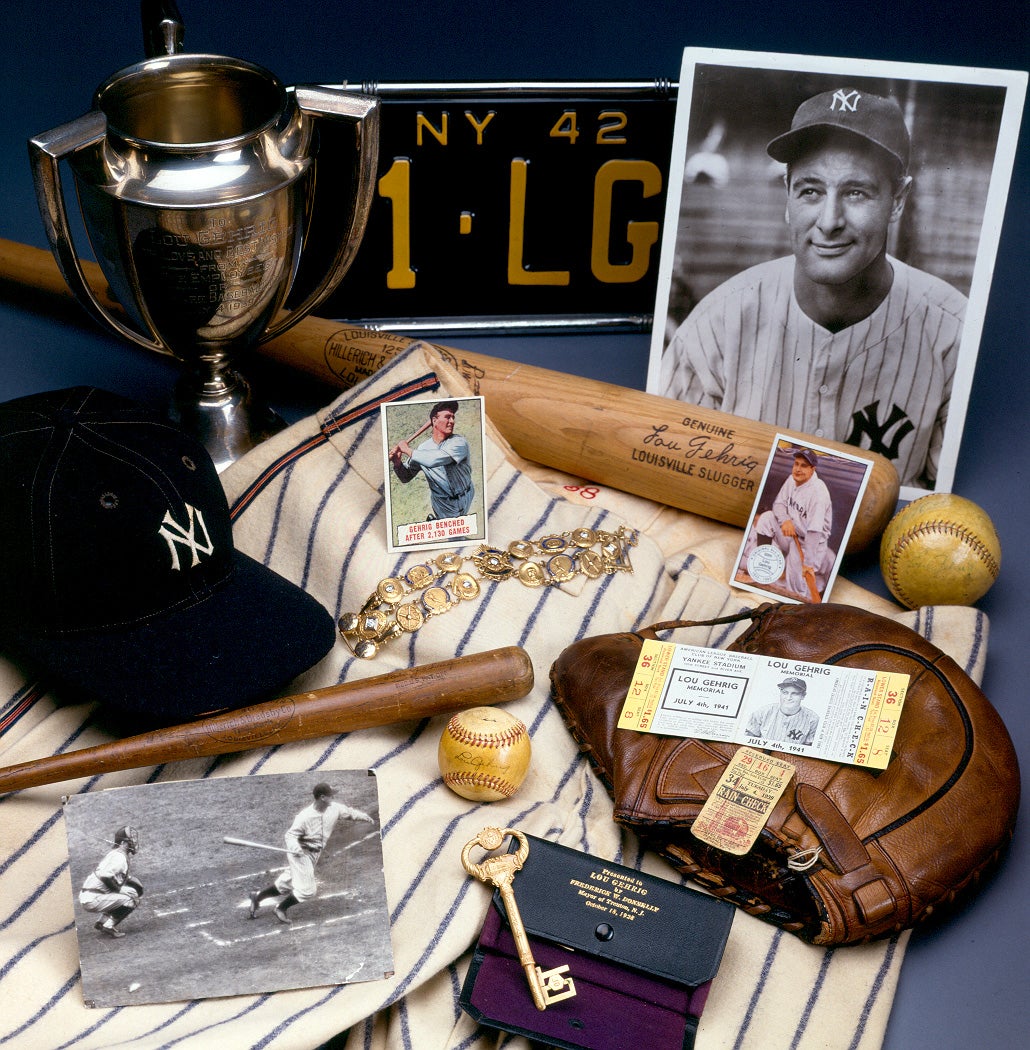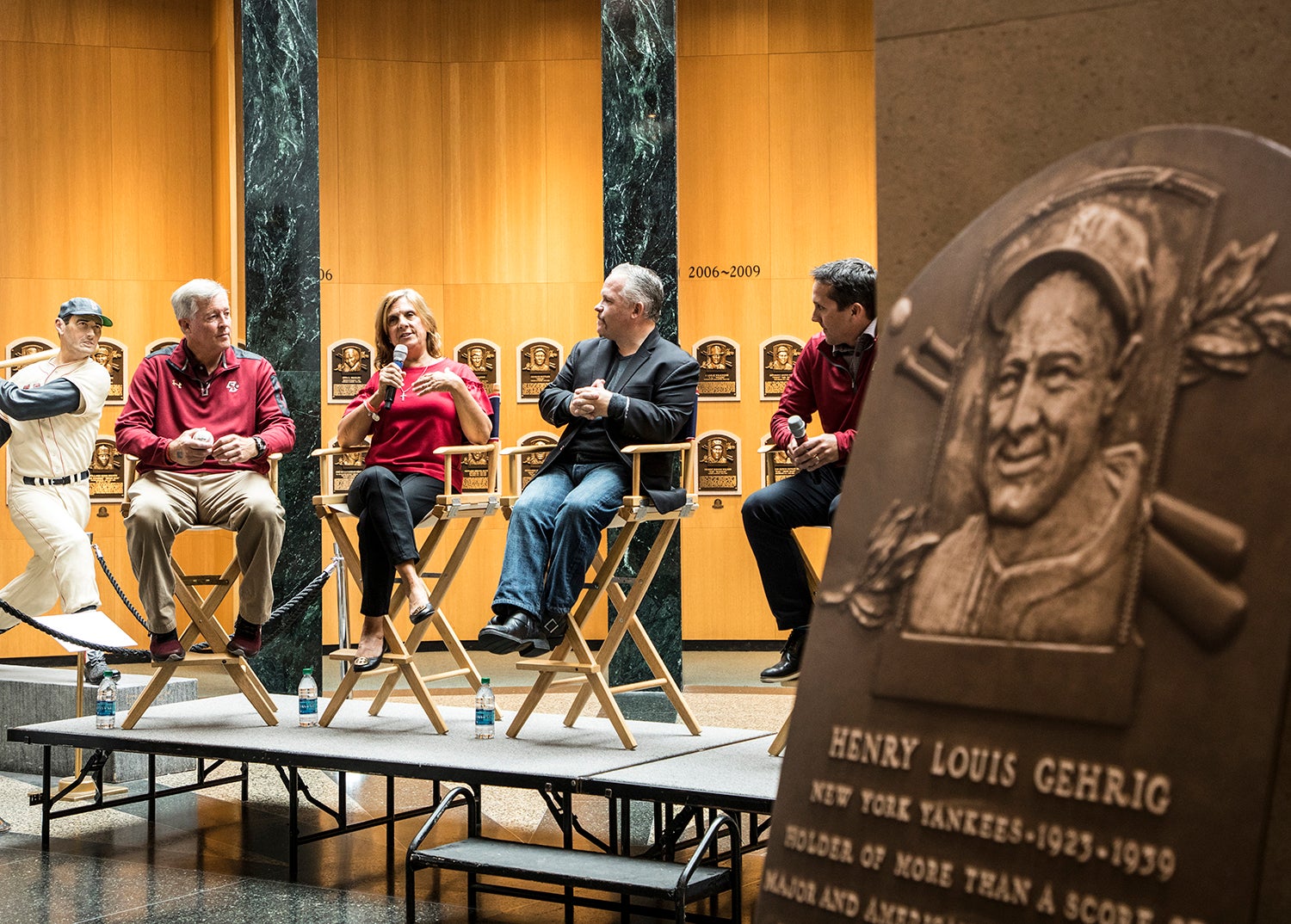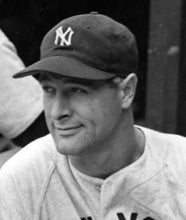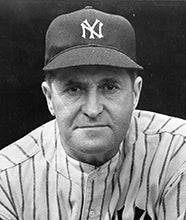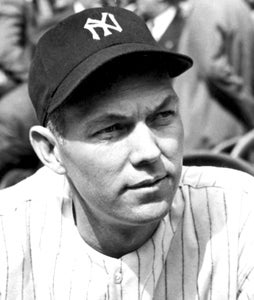Today I consider myself the luckiest man on the face of the earth.”
- Home
- Our Stories
- Luckiest Man
Luckiest Man
Lou Gehrig, the Iron Horse of baseball famed for his 2,130 consecutive-games-played streak, made one of the most memorable speeches in the annals of sports. Heartfelt and poignant, this man with less than two years to live shared his feelings to an enraptured audience that left tears rolling down the cheeks of all but a few.
It was on July 4, 1939, Lou Gehrig Appreciation Day, when the longtime Yankee first baseman uttered the famous words at a home plate ceremony at Yankee Stadium: “For the past two weeks you have been reading about a bad break. Yet today I consider myself the luckiest man on the face of the earth.”
The next day’s New York Times wrote “the vast gathering, sitting in absolute silence for a longer period than perhaps any baseball crowd in history, heard Gehrig himself deliver as amazing a valedictory as ever came from a ball player.”
"For the past two weeks you have been reading about a bad break. Yet today I consider myself the luckiest man on the face of the earth. I have been in ballparks for seventeen years and have never received anything but kindness and encouragement from you fans.
“When you look around, wouldn’t you consider it a privilege to associate yourself with such a fine looking men as they’re standing in uniform in this ballpark today? Sure, I'm lucky. Who wouldn't consider it an honor to have known Jacob Ruppert? Also, the builder of baseball's greatest empire, Ed Barrow? To have spent six years with that wonderful little fellow, Miller Huggins? Then to have spent the next nine years with that outstanding leader, that smart student of psychology, the best manager in baseball today, Joe McCarthy? Sure, I'm lucky.
"When the New York Giants, a team you would give your right arm to beat, and vice versa, sends you a gift - that's something. When everybody down to the groundskeepers and those boys in white coats remember you with trophies - that's something. When you have a wonderful mother-in-law who takes sides with you in squabbles with her own daughter - that's something. When you have a father and a mother who work all their lives so you can have an education and build your body - it's a blessing. When you have a wife who has been a tower of strength and shown more courage than you dreamed existed - that's the finest I know.
"So I close in saying that I might have been given a bad break, but I’ve got an awful lot to live for. Thank you."
Gehrig had been forced to retire as a player two weeks earlier due to his being diagnosed with amyotrophic lateral sclerosis, the disease that today bears his name. But on this hot and muggy day he was being showered with kind words and numerous gifts, one of which remained a source of inspiration to his dying days and can be seen today at the National Baseball Hall of Fame and Museum.
The Independence Day event, held between games of a doubleheader against the visiting Washington Senators, saw 61,808 fans pack the bunting-draped ballpark. For over forty minutes Gehrig was heralded by members of the 1927 Yankees (including Murderer’s Row leader Babe Ruth), New York City Mayor Fiorello La Guardia and Postmaster General James A. Farley.
Among the gifts Gehrig received this day were a silver service set from the Yankees front office; a fruit bowl and two candlesticks from the New York Giants; a silver pitcher from the Harry M. Stevens company, the stadium’s concessionaires; two silver platters from the Harry M. Stevens employees; a fishing rod and tackle from the Yankee Stadium employees and ushers; a silver, three-handled loving cup from the Yankees office staff (pictured at right); a ring from the jewelry firm Dieges & Clust; a scroll from the Old Timers Association of Denver; a scroll from Washington fans; and a tobacco stand from the New York Chapter of the Baseball Writers’ Association of America.
Arguably the most cherished item Gehrig was given was a trophy from his 1939 Yankees teammates (pictured at right). Presented by Yankees manager Joe McCarthy, the 21 ½-inch-tall silver trophy with wood base features an eagle perched atop a baseball supported by six bats. On one side of the trophy were the names of all his current teammates; the other side a poem written by New York Times sports columnist John Kieran:
To LOU GEHRIG
We’ve been to the wars together;
We took our foes as they came:
And always you were the leader,
And ever you played the game.
Idol of cheering millions:
Records are yours by sheaves:
Iron of frame they hailed you,
Decked you with laurel leaves.
But higher than that we hold you,
We who have known you best;
Knowing the way you came through
Every human test.
Let this be a silent token
Of lasting friendship’s gleam
And all that we’ve left unspoken.
Your Pals of the Yankee Team.
Kieran would later write that longtime Yankees catcher Bill Dickey, Gehrig’s roommate on the road, approached him about writing the poem. “You know how we feel about Lou,” Dickey said to Kieran. “Can you put it in words that will go on a silver baseball statue we’re giving him?”
Kieran did know how the Yankees players felt about Gehrig and tried to put it into words for them. The Underwood typewriter Kieran used to write the poem is part of the Museum’s permanent collection.
“Admittedly that’s but a feeble interpretation of what the Yankee players felt about Lou Gehrig,” Kieran would later write. “But Bill Dickey, when it was handed to him, read it, looked up and said quietly, ‘That’s okay. Thanks.’”
Kieran not only knew Gehrig as a player but also as a neighbor in Riverdale, NY. He would visit Gehrig when he was housebound in the last stages of his illness.
According to Kieran, one day Gehrig, from his chair by an open window, pointed to the trophy from his teammates and said, “You know, some time when I get – well, sometimes I have that handed to me – and I read it – and I believe it – and I feel pretty good.”
Soon after Gehrig died at the age of 37 on June 2, 1941, Kieran would write, “That’s the best pay this observer ever received for anything he ever wrote.”
It was reported that after Gehrig’s famed speech, he walked to the dugout carrying only one of the many gifts he had received, the trophy from his teammates.
Kieran, who was honored in 1973 by the Hall of Fame with the J.G. Taylor Spink Award for “meritorious contributions to baseball writing,” was an honorary pallbearer at Gehrig’s funeral. Soon after Gehrig’s death he was asked by Gehrig’s widow, Eleanor, to make the announcement to the newspapers.
On Dec. 7, 1939, the BBWAA voted unanimously to suspend the waiting period and placed Gehrig in the Baseball Hall of Fame immediately “to commemorate the year in which he achieved his record.” Besides his consecutive-games-played streak, which has since been surpassed by Cal Ripken Jr., Gehrig finished his 17-year career with 493 home runs and a .340 batting average.
Trophy presented to Lou Gehrig on July 4, 1939 - B-43-85 (Milo Stewart Jr./National Baseball Hall of Fame)
The estate of Eleanor Gehrig, who passed away in 1984, donated the trophy with the Kieran poem to the Hall of Fame in 1985. Today, it can be viewed on the Museum’s second floor as part of Baseball’s Timeline, located at the bottom of Gehrig’s locker, along with the fruit bowl he received from the Giants, as part of an exhibit case dedicated to the Yankees of the late 1930s and early 1940s. The exhibit also includes a cap and jersey worn by Gehrig in 1939, as well as the glove and bronzed baseball shoe from Gehrig’s final game on April 30, 1939.

